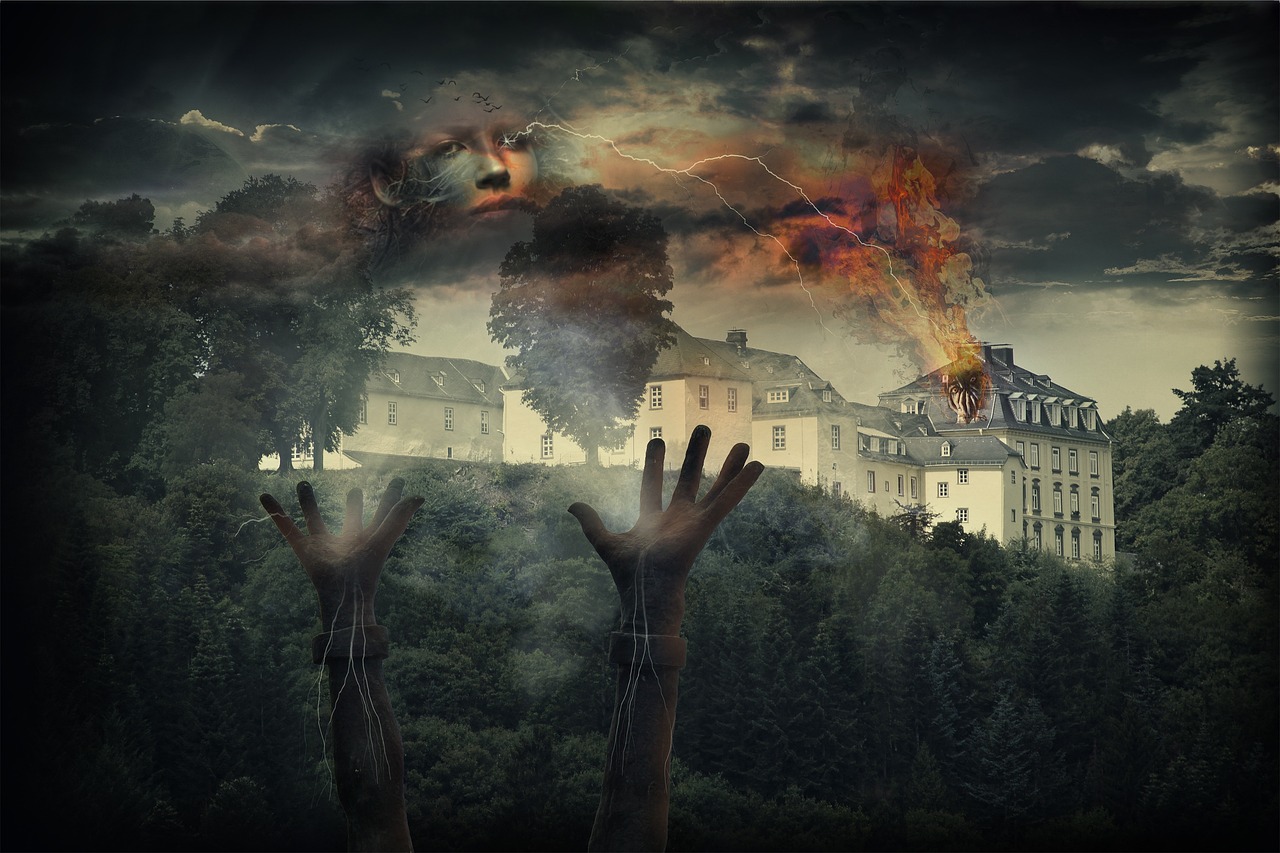Analyzing Wittgenstein's Tractatus Logico-Philosophicus
Wittgenstein's Tractatus Logico-Philosophicus is not just a book; it’s a philosophical journey that challenges the very foundations of how we understand language, reality, and the limits of our thoughts. Written during World War I and published in 1921, this work emerged from a tumultuous historical backdrop, reflecting deep-seated questions about meaning and existence that resonate even today. So, what makes this text so compelling? It’s all about the intricate dance between language and reality, a theme that Wittgenstein explores with remarkable precision.
At its core, the Tractatus aims to address some of the most profound philosophical questions: What is the relationship between language and the world? How do we express thoughts, and what are the limits of those expressions? Wittgenstein's work is structured in a way that invites readers to ponder these questions deeply, leading them through a series of propositions that build upon one another like a carefully constructed house of cards. Each proposition serves not only as a statement but also as a stepping stone toward a more significant understanding of the complexities of language.
Wittgenstein's primary objective was to delineate the boundaries of what can be said meaningfully. He believed that many philosophical problems arise from a misunderstanding of language, and by clarifying how language functions, we can dissolve these problems. It’s like trying to solve a puzzle without knowing the picture on the box; once you see the image, the pieces fall into place. This notion of clarity is central to the Tractatus, and it sets the stage for the key themes that follow.
As we delve deeper into the Tractatus, we find that its influence extends far beyond its initial publication. It has sparked discussions in various fields, including analytic philosophy, linguistic analysis, and even ethics. Wittgenstein's thoughts have become a touchstone for debates about the nature of truth, meaning, and the role of language in shaping our understanding of the world.
In the following sections, we will explore the key themes that underpin the Tractatus, from the nature of reality to the intricate relationship between language and thought. We will examine how Wittgenstein's ideas about the limits of language can help us navigate the complexities of philosophical inquiry. So, buckle up, because this exploration of Wittgenstein's Tractatus is not just an academic exercise; it's a journey into the very essence of what it means to think and communicate.
The Tractatus is rich with themes that challenge our conventional understanding of language and its relation to reality. One of the most significant themes is the Picture Theory of Language, which posits that words and sentences can represent states of affairs in the world. In this view, language functions like a map, where each word corresponds to a specific element in reality. This analogy helps illustrate how our linguistic expressions can mirror the world around us.
Wittgenstein's picture theory posits that language represents reality through logical structures. This means that a sentence can be seen as a picture of a fact, where the arrangement of words reflects the arrangement of objects in the world. For instance, consider the sentence "The cat is on the mat." Here, the structure of the sentence corresponds to the actual state of affairs, making it a meaningful representation. This subheading examines how this theory functions and its implications for understanding meaning.
Exploring the concept of logical form, we find that it underpins Wittgenstein's picture theory. Logical form refers to the abstract structure that allows a sentence to represent a reality. It’s like the skeleton of a body; without it, the body cannot take shape. This section discusses how logical form creates a bridge between language and the world, enabling us to communicate complex ideas effectively.
Wittgenstein articulates the boundaries of language, emphasizing what can and cannot be meaningfully expressed within linguistic frameworks. He famously states, “Whereof one cannot speak, thereof one must be silent.” This powerful assertion challenges us to consider the limitations of our expressions and encourages a more profound respect for the mysteries that lie beyond our words. It’s a reminder that while language is a powerful tool, it also has its constraints, much like a camera that can capture only so much of a landscape.
Wittgenstein's views on ethics and aesthetics are often overlooked, yet they play a crucial role in his overall philosophical framework. He suggests that ethical and aesthetic values are beyond the scope of logical representation, existing in a realm where language falls short. This insight invites us to reflect on the nature of our moral and aesthetic judgments, prompting questions about how we can express what is inherently subjective.
The lasting impact of Wittgenstein's work on subsequent philosophical thought is profound. His ideas have shaped the course of analytic philosophy and have influenced numerous thinkers across various disciplines. The Tractatus not only opened new avenues for inquiry but also challenged existing paradigms, making it a cornerstone of modern philosophy.
The Tractatus was met with a mix of praise and criticism from contemporaries and later philosophers. While some hailed it as a groundbreaking work, others questioned its conclusions. This exploration of its reception highlights the vibrant discourse that surrounds Wittgenstein's ideas, showcasing how they continue to provoke thought and debate.
Today, the relevance of the Tractatus in modern philosophical discourse is undeniable. Wittgenstein's ideas continue to influence current debates in philosophy and linguistics, reminding us that the quest for understanding language and reality is far from over. As we navigate the complexities of communication in our digital age, the insights gleaned from the Tractatus offer invaluable guidance.
- What is the main argument of the Tractatus? The main argument revolves around the relationship between language and reality, positing that language can represent the world through logical structures.
- How does the Picture Theory of Language work? It suggests that sentences can mirror facts in the world, with their structure reflecting the arrangement of objects in reality.
- What are the limits of language according to Wittgenstein? Wittgenstein argues that language can only express certain things meaningfully, and beyond these limits, silence is required.

Introduction to the Tractatus
Wittgenstein's Tractatus Logico-Philosophicus is not just a title; it's a gateway into the labyrinth of philosophy, logic, and language. Written during World War I and published in 1921, this work emerged from a tumultuous historical backdrop that shaped its profound insights. Wittgenstein sought to tackle some of the most pressing philosophical questions of his time, such as the nature of reality, the limits of language, and the relationship between thought and the world. But what makes this text so compelling? It's the way Wittgenstein meticulously constructs his arguments, akin to a master architect designing a complex building, where every brick—every proposition—has a specific purpose and place.
At its core, the Tractatus is a philosophical exploration that aims to delineate the boundaries of what can be said, what can be shown, and what lies beyond the limits of language. Wittgenstein believed that language is a picture of reality, a way to represent the world logically. This idea is not just a passing thought; it forms the bedrock of his work. By dissecting language, Wittgenstein invites readers to reconsider not only how we communicate but also how we understand existence itself.
The structure of the Tractatus is unique, consisting of a series of numbered propositions that build upon one another. This logical progression mirrors the way we often think and reason. Each proposition serves as a stepping stone, leading the reader deeper into Wittgenstein's intricate philosophical landscape. As you navigate through the text, you may find yourself pondering questions like: What is the essence of meaning? or Can language ever fully capture reality? These inquiries are not merely academic; they resonate with our everyday experiences of communication and understanding.
Moreover, the Tractatus doesn't shy away from addressing the implications of its philosophical assertions. It challenges us to consider the ethical and aesthetic dimensions of life, suggesting that while language has its limits, the experiences of beauty and morality transcend mere words. This dual focus on the logical and the existential adds a rich layer to Wittgenstein's work, making it a timeless piece that continues to inspire and provoke thought.
In summary, Wittgenstein's Tractatus Logico-Philosophicus is a monumental text that intertwines language, logic, and reality. Its historical context, philosophical objectives, and the questions it raises are as relevant today as they were a century ago. As we dive deeper into the key themes of the Tractatus, we will uncover not only Wittgenstein's revolutionary ideas but also their lasting impact on the world of philosophy.

Key Themes in the Tractatus
Wittgenstein's Tractatus Logico-Philosophicus is a profound exploration of the relationship between language, reality, and thought. At its core, the Tractatus addresses several key themes that continue to resonate in philosophical discussions today. One of the most significant themes is the nature of reality. Wittgenstein posits that the world is made up of facts, not things, which radically shifts how we perceive existence. This distinction invites readers to contemplate what constitutes reality and how our understanding of it is shaped by our language.
Another central theme is the relationship between language and the world. Wittgenstein argues that language serves as a mirror to reality, reflecting its structure through what he calls the Picture Theory of Language. This theory suggests that sentences can represent states of affairs in the world, much like a photograph captures an image. By understanding language in this way, we can begin to appreciate the intricate connections between words and the world they describe.
Moreover, the Tractatus delves into the limits of thought and language. Wittgenstein famously asserts, "Whereof one cannot speak, thereof one must be silent." This statement encapsulates his belief that language has boundaries; there are aspects of human experience and understanding that transcend linguistic expression. This idea not only raises questions about what can be meaningfully discussed but also challenges us to consider the implications of silence in philosophical discourse.
Wittgenstein's picture theory posits that language represents reality through logical structures. This means that the structure of a proposition mirrors the structure of the fact it represents. For instance, consider the relationship between a simple sentence and the state of affairs it describes. Just as a photograph captures a moment in time, a proposition captures a specific fact about the world. This analogy helps clarify how language can convey meaning, allowing us to communicate complex ideas succinctly.
At the heart of Wittgenstein's picture theory is the concept of logical form. This form is the underlying structure that enables language to represent reality accurately. Each proposition has a logical form that corresponds to the reality it depicts. For example, if we say, "The cat is on the mat," the logical form of this statement reflects the relationship between the cat and the mat. Understanding this relationship is crucial for grasping Wittgenstein's argument about the nature of meaning and representation.
Wittgenstein articulates the boundaries of language with remarkable clarity. He emphasizes that while language is a powerful tool for communication, it is not all-encompassing. Certain experiences, such as emotions or ethical dilemmas, may elude precise expression. This limitation invites readers to reflect on the ineffable aspects of human existence and the role of language in shaping our understanding. By recognizing these limits, we can develop a more nuanced appreciation of what can and cannot be articulated through words.
Interestingly, Wittgenstein's views on ethics and aesthetics are often overshadowed by his discussions on language and logic. However, these concepts play a vital role in his philosophical framework. He suggests that ethical and aesthetic judgments are not merely subjective opinions but are grounded in the same logical structure that underpins all meaningful language. This perspective challenges the notion that ethics and aesthetics exist in a separate realm, inviting deeper exploration into how these themes intersect with his overall philosophy.

The Picture Theory of Language
Wittgenstein's Picture Theory of Language is one of the most intriguing aspects of his work, particularly in the Tractatus Logico-Philosophicus. This theory posits that language functions as a kind of picture of reality, suggesting that words and sentences represent states of affairs in the world much like a photograph captures an image. Imagine, for a moment, how a photograph can convey a scene without needing to describe it verbally. In a similar vein, Wittgenstein argues that language mirrors the structure of reality, allowing us to understand and communicate about the world around us.
The core idea is that a meaningful statement can be broken down into its logical components, which correspond to the elements of the real world. This means that the way we arrange words can reflect the relationships between objects and facts in reality. For instance, consider the statement "The cat is on the mat." Here, the words correspond to specific objects (the cat and the mat) and a relationship (the cat being on the mat). Wittgenstein believed that this logical structure is what gives language its meaning.
To further illustrate this concept, let’s break down the essential components of the Picture Theory:
| Component | Description |
|---|---|
| Language | Represents reality through logical structures. |
| Logical Form | The underlying structure that allows language to depict reality. |
| State of Affairs | The actual situation or fact in the world that language refers to. |
Wittgenstein's emphasis on logical form is crucial because it underpins the Picture Theory. He argues that for language to successfully represent reality, it must share a common logical structure with the world it describes. This means that the way we construct sentences must reflect the relationships and configurations of the objects they refer to. It's as if language is a map, where the map's layout must correspond to the actual terrain for it to be useful. However, this leads us to an important question: what happens when language fails to capture reality accurately?
This brings us to the limits of language. Wittgenstein famously noted that there are boundaries to what can be meaningfully expressed. If language is a picture, then it can only depict what exists in the world. Anything outside of this realm—like ethical values or aesthetic judgments—cannot be adequately represented through language. This limitation is pivotal in understanding Wittgenstein’s philosophy, as it suggests that many philosophical problems arise from misunderstandings about the nature of language itself.
In conclusion, the Picture Theory of Language is a fascinating exploration of how we use words to create meaning. By viewing language as a representation of reality, Wittgenstein challenges us to consider the implications of our linguistic choices and the inherent limitations of expression. As we navigate through the complexities of language, it becomes clear that understanding its structure is essential for grasping the world around us.
- What is the Picture Theory of Language?
The Picture Theory of Language suggests that language represents reality through logical structures, where sentences correspond to states of affairs in the world.
- How does logical form relate to the Picture Theory?
Logical form is the underlying structure that allows language to depict reality accurately. It ensures that the arrangement of words reflects the relationships between objects.
- What are the limits of language according to Wittgenstein?
Wittgenstein posits that language can only express what exists in reality, leaving out ethical and aesthetic judgments, which cannot be meaningfully articulated through words.

Logical Form and Representation
Wittgenstein's exploration of logical form and its role in representation is a cornerstone of his philosophy in the Tractatus Logico-Philosophicus. He posits that language functions as a picture of reality, where words correspond to the world in a structured way. This idea can be quite profound, as it suggests that our understanding of the world is intricately tied to the way we express it through language. Imagine language as a map; just as a map represents geographical features, language represents the facts of the world. However, not all maps are created equal, and similarly, not all language captures the essence of reality accurately.
The concept of logical form refers to the underlying structure that allows language to depict reality. Wittgenstein argues that for a proposition to hold meaning, it must share a logical form with the state of affairs it describes. This is akin to a photograph that accurately captures a scene; if the photograph is distorted, it fails to represent the reality it aims to depict. In this way, logical form serves as the bridge between language and the world, ensuring that our statements about the world can be verified or falsified based on their correspondence to reality.
To illustrate this further, consider the following table that outlines the relationship between language, logical form, and reality:
| Element | Description |
|---|---|
| Language | The system of signs we use to communicate. |
| Logical Form | The structure that allows propositions to represent facts. |
| Reality | The actual state of affairs in the world. |
Wittgenstein's emphasis on logical form raises critical questions about the nature of meaning. If language is merely a representation of reality, what happens when we encounter concepts that seem to elude logical structure? Wittgenstein himself acknowledges these limitations, suggesting that while language can depict many aspects of reality, it cannot encompass everything. There are certain experiences and feelings that escape the confines of linguistic expression, much like trying to capture the essence of a sunset in a single photograph. This leads us to ponder the boundaries of language and the extent to which it can truly convey human experience.
In conclusion, the relationship between logical form and representation in Wittgenstein's work is a rich tapestry of ideas that challenges us to think critically about how we use language. It compels us to consider not just what we say, but how we say it and the implications of that structure on our understanding of the world. As we delve deeper into the Tractatus, we find that these themes resonate beyond philosophy, influencing fields such as linguistics, cognitive science, and even artificial intelligence, where the quest for meaningful representation continues to unfold.
- What is the main idea of Wittgenstein's picture theory?
Wittgenstein's picture theory suggests that language represents reality by mirroring its logical structure, allowing propositions to depict facts about the world. - How does logical form influence meaning?
Logical form is essential for meaning because it establishes a connection between language and the reality it describes, ensuring propositions can be evaluated based on their truthfulness. - What are the limitations of language according to Wittgenstein?
Wittgenstein argues that language cannot express everything, particularly in areas like ethics and aesthetics, where experiences may transcend logical representation.

Limits of Language
Wittgenstein's exploration of the is not just a footnote in his philosophical work; it is a central theme that resonates throughout the Tractatus Logico-Philosophicus. He famously asserts, "Whereof one cannot speak, thereof one must be silent." This statement encapsulates the idea that language has boundaries, and it raises significant questions about what can be meaningfully expressed. Imagine language as a map of reality; while it can outline vast territories of thought and experience, there are areas it simply cannot cover. This limitation is not a failure of language itself but a reflection of the complexity and richness of the world we inhabit.
Wittgenstein argues that language is not a mere tool for communication; rather, it shapes our understanding of reality. The boundaries of language delineate the limits of our thought. For instance, consider the abstract concepts of love or beauty. While we can describe these feelings and aesthetics, the essence of these experiences often eludes precise verbal capture. This leads us to ponder: how can we communicate the incommunicable? Wittgenstein suggests that there are dimensions of human experience that exist beyond the reach of linguistic expression. This is where the philosophical implications become profound.
One of the key aspects of Wittgenstein's argument is the distinction between what can be said and what must remain unsaid. He categorizes statements into two primary realms: those that can be logically articulated and those that are inherently ineffable. To illustrate this, we can consider a simple table:
| Type of Statement | Description |
|---|---|
| Descriptive Statements | Can be expressed through language, e.g., "The sky is blue." |
| Ethical/Aesthetic Statements | Often transcend linguistic expression, e.g., "Love is beautiful." |
This table highlights the dichotomy between statements that can be explicitly articulated and those that elude verbalization. The implications of this distinction are significant; they suggest that much of our emotional and ethical lives cannot be fully captured by language. As a result, Wittgenstein invites us to reflect on the nature of our expressions and the limitations inherent in our attempts to communicate profound truths.
Furthermore, the limits of language also prompt us to consider the role of silence. In a world overflowing with words, silence becomes a powerful tool. It allows for reflection and introspection, serving as a reminder that not everything needs to be verbalized. Wittgenstein's perspective encourages us to embrace the mysteries of existence that lie beyond the confines of language, suggesting that some truths are best appreciated in silence. This notion resonates with many philosophical traditions that emphasize the importance of what lies beyond articulation.
In conclusion, Wittgenstein's insights into the limits of language challenge us to think critically about our communicative practices. They remind us that while language is a potent vehicle for expressing ideas, it also has its constraints. By acknowledging these limits, we open ourselves to a deeper understanding of our experiences and the complexities of human life. So, the next time you find yourself struggling to articulate a feeling or a thought, remember Wittgenstein's wisdom: some things are better left unsaid.
- What are the main limits of language according to Wittgenstein?
Wittgenstein posits that language cannot adequately express certain ethical, aesthetic, and emotional experiences, which leads to the conclusion that some truths are beyond verbal articulation.
- How does Wittgenstein's view on language influence modern philosophy?
Wittgenstein's ideas have significantly influenced analytic philosophy and linguistic analysis, prompting philosophers to reconsider the relationship between language, thought, and reality.
- Why is silence important in Wittgenstein's philosophy?
Silence allows for reflection on experiences that cannot be captured by language, emphasizing the value of what remains unsaid in understanding the human condition.

Ethics and Aesthetics in the Tractatus
When we dive into the depths of Wittgenstein's Tractatus Logico-Philosophicus, we often find ourselves captivated by his exploration of language, logic, and reality. However, tucked away in this complex web of ideas are profound insights into ethics and aesthetics. At first glance, these themes may seem peripheral to the main thrust of his argument, but they are, in fact, integral to understanding his philosophical vision. Wittgenstein posits that ethics and aesthetics are not merely decorative aspects of life; rather, they represent the very limits of what can be articulated through language. In this sense, they become a sort of moral compass, guiding us toward what is genuinely important in human existence.
Wittgenstein famously states, "Whereof one cannot speak, thereof one must be silent." This declaration underscores the notion that certain aspects of life—especially those related to ethics and aesthetics—transcend the boundaries of linguistic expression. He suggests that while we can describe the world around us and articulate logical propositions, the deeper values and meanings that govern our lives often elude expression. This leads us to ponder: how can we understand what is good or beautiful if we can't adequately express it? In Wittgenstein's framework, the answer lies in the recognition that these concepts are felt rather than spoken. They exist in the realm of the unsayable, yet they are profoundly influential in shaping our experiences.
Moreover, Wittgenstein's exploration of ethics and aesthetics can be viewed through the lens of his broader philosophical project. He argues that the essence of the world is not merely factual but is also imbued with significance. For instance, consider the following points:
- Ethics: In Wittgenstein's view, ethical propositions cannot be proven true or false in the same way that scientific statements can. They are expressions of our values and commitments, reflecting our subjective experiences.
- Aesthetics: Similarly, aesthetic judgments are not about objective measures of beauty but are deeply personal, shaped by individual perspectives and cultural contexts.
This duality of ethics and aesthetics as subjective realms invites us to reflect on our values and the meanings we ascribe to our experiences. In essence, Wittgenstein urges us to acknowledge the limitations of language while simultaneously embracing the richness of our ethical and aesthetic lives. His thoughts prompt us to ask: How do we navigate a world filled with complexities that language cannot capture? The answer may lie in the silent appreciation of beauty and the ethical commitments we hold dear.
Ultimately, Wittgenstein's insights into ethics and aesthetics serve as a reminder that while language is a powerful tool for communication, it is not the sole arbiter of meaning. The realms of ethics and aesthetics invite a different kind of understanding—one that transcends words and speaks to the heart of human experience. By recognizing the limitations of language, we can better appreciate the profound significance of what lies beyond it. In this way, Wittgenstein's Tractatus becomes not just a philosophical text but a philosophical journey into the depths of human existence, where ethics and aesthetics play a crucial role.
- What is the main argument of Wittgenstein's Tractatus?
Wittgenstein argues that the structure of language reflects the structure of reality, and that what can be meaningfully said is limited. - How does Wittgenstein view ethics and aesthetics?
He believes that ethics and aesthetics are beyond the reach of language and cannot be fully articulated, yet they are essential to understanding human life. - Why is the Tractatus significant in philosophy?
The Tractatus has had a profound influence on analytic philosophy, particularly in discussions about language, meaning, and the limits of expression.

The Influence of the Tractatus
The Tractatus Logico-Philosophicus by Ludwig Wittgenstein is not just a monumental text in philosophy; it is a cornerstone that has shaped the landscape of modern thought. Its influence extends far beyond the confines of its pages, permeating various fields such as linguistics, logic, and even ethics. Understanding its impact requires a deep dive into how it has been received and critiqued over the years, as well as its legacy in contemporary discussions.
When the Tractatus was first published in 1921, it was met with a mix of admiration and skepticism. Many philosophers found its ideas revolutionary, while others criticized its conclusions. The text laid the groundwork for the development of analytic philosophy, which emphasizes clarity and logical argumentation. This shift in focus encouraged philosophers to adopt a more scientific approach to philosophical problems, often mirroring the methodologies used in the natural sciences.
One of the most significant influences of the Tractatus is its role in the formation of the Vienna Circle and the development of logical positivism. Members of the Circle, including figures like Moritz Schlick and Rudolf Carnap, were heavily inspired by Wittgenstein's ideas, particularly the notion that philosophical problems could often be resolved through linguistic analysis. They believed that many philosophical questions were essentially meaningless because they could not be empirically verified. This perspective led to a rigorous examination of language and its use in philosophical discourse.
Moreover, the Tractatus introduced the idea of language games, which has been pivotal in understanding how meaning is constructed through use rather than merely through reference. This concept has influenced various fields, including linguistics, where scholars like J.L. Austin and John Searle built upon Wittgenstein's ideas to explore the performative aspects of language. They argued that the context in which language is used plays a crucial role in determining its meaning, a notion that has become foundational in modern linguistic theory.
Despite its acclaim, the Tractatus has not escaped criticism. Some philosophers, including Martin Heidegger and Gilbert Ryle, have challenged Wittgenstein's conclusions, arguing that his strict demarcation of what can be said and what must be passed over in silence is too limiting. They contend that it overlooks the richness of human experience that cannot be captured by logical structures. This ongoing debate highlights the Tractatus as a living document, one that continues to provoke thought and discussion.
In the contemporary philosophical landscape, the Tractatus remains relevant, especially in discussions surrounding language, meaning, and representation. Its themes resonate with current inquiries into the nature of truth and the limits of expression. Philosophers today grapple with questions that Wittgenstein raised nearly a century ago, demonstrating the enduring power of his work.
In conclusion, the influence of the Tractatus Logico-Philosophicus is profound and multifaceted. Its legacy can be seen in the evolution of analytic philosophy, the development of linguistic theories, and ongoing debates about the nature of language and reality. Wittgenstein's work challenges us to examine not only the words we use but also the very frameworks through which we understand the world.
- What is the main argument of the Tractatus?
The main argument of the Tractatus is that the structure of language reflects the structure of reality, and that meaningful statements are those that can be logically verified.
- How did the Tractatus influence analytic philosophy?
The Tractatus influenced analytic philosophy by emphasizing clarity in language and the importance of logical analysis in philosophical inquiry.
- What are some criticisms of the Tractatus?
Critics argue that Wittgenstein's strict limits on language overlook the complexity of human experience and that his conclusions are overly simplistic.

Reception and Criticism
Wittgenstein's Tractatus Logico-Philosophicus has been a lightning rod for both admiration and critique since its publication in 1921. Initially, it was met with a wave of enthusiasm from the Vienna Circle and other early analytic philosophers who embraced its rigorous approach to language and logic. They viewed the Tractatus as a monumental step in the quest for clarity in philosophical discourse. The work's assertion that “the limits of my language mean the limits of my world” resonated deeply with those who sought to delineate the boundaries of meaningful expression.
However, Wittgenstein's ideas also sparked considerable debate. Some contemporaries, like Bertrand Russell, who was instrumental in shaping Wittgenstein's early thought, found themselves perplexed by the implications of the Tractatus. Russell appreciated the logical structure of the work but questioned whether Wittgenstein's stringent limitations on language could genuinely encapsulate the complexities of human experience. This tension between clarity and complexity is a recurring theme in the reception of the Tractatus.
As time progressed, criticism of the Tractatus evolved. Philosophers such as Gilbert Ryle and J.L. Austin emerged, advocating a more pragmatic approach to language that contrasted sharply with Wittgenstein's formalism. They argued that the Tractatus's insistence on logical representation overlooked the rich, contextual nature of language as it is used in everyday life. Ryle famously critiqued Wittgenstein's work by suggesting that it failed to account for the various ways in which language functions in different contexts.
In a more contemporary setting, the Tractatus has been analyzed through various lenses, including feminist philosophy and post-structuralism. Critics argue that Wittgenstein's framework, while groundbreaking, is limited in its applicability to diverse philosophical inquiries. For instance, the emphasis on logical form can obscure the nuances of social and cultural dimensions of language. Some scholars have even suggested that Wittgenstein's work inadvertently reinforces a binary view of language and reality, neglecting the fluidity and dynamism inherent in linguistic practices.
Despite these critiques, the Tractatus remains a cornerstone of analytic philosophy, often referenced in discussions about the philosophy of language and logic. It has inspired numerous interpretations and adaptations, leading to a rich tapestry of scholarly work that seeks to either defend or dismantle Wittgenstein's arguments. The ongoing dialogue around the Tractatus is a testament to its profound impact on philosophical thought.
To summarize the reception and criticism of the Tractatus, here’s a brief table highlighting key responses:
| Philosopher | Response |
|---|---|
| Bertrand Russell | Appreciated its logical rigor but questioned its limitations. |
| Gilbert Ryle | Critiqued its neglect of the contextual use of language. |
| J.L. Austin | Advocated for a more pragmatic approach to language. |
| Contemporary Scholars | Analyzed through feminist and post-structuralist lenses, noting limitations in cultural applicability. |
In conclusion, the reception of Wittgenstein's Tractatus is a rich tapestry woven from threads of admiration, criticism, and ongoing debate. Its influence on philosophy is undeniable, yet the discussions it has sparked reveal the complexities and challenges inherent in understanding the relationship between language, thought, and reality.
- What is the main argument of the Tractatus? The Tractatus argues that the structure of language mirrors the structure of reality, and that meaningful statements can only be made within the limits of logical language.
- How did contemporaries react to Wittgenstein's ideas? Reactions varied, with some praising its clarity and rigor, while others criticized its limitations and lack of attention to the practical use of language.
- Why is the Tractatus still relevant today? The Tractatus continues to influence debates in philosophy, particularly in the areas of language and logic, prompting discussions about the nature of meaning and representation.

Legacy and Contemporary Relevance
Wittgenstein's Tractatus Logico-Philosophicus has left an indelible mark on the landscape of philosophy, and its influence continues to resonate in contemporary thought. The work, which was initially published in 1921, has sparked countless discussions and debates, shaping the course of analytic philosophy and linguistic analysis. But what exactly makes this text so enduring? To understand its legacy, we must first look at its foundational ideas and how they have been interpreted over the years.
One of the most significant aspects of the Tractatus is its challenge to traditional notions of philosophy. Wittgenstein proposed that many philosophical problems arise from misunderstandings of language. This radical idea has influenced a generation of philosophers who have sought to clarify language's role in shaping our understanding of reality. For instance, the works of later philosophers such as Bertrand Russell and Willard Van Orman Quine can be traced back to Wittgenstein's insights, as they grappled with the implications of language and meaning.
Moreover, the Tractatus has been a focal point in discussions surrounding the limits of language and thought. Wittgenstein famously stated, "Whereof one cannot speak, thereof one must be silent." This assertion has led to profound inquiries into the nature of ethics, aesthetics, and the ineffable aspects of human experience. In many ways, it serves as a reminder that not everything can be neatly encapsulated in words, pushing contemporary thinkers to explore the boundaries of expression.
The legacy of the Tractatus is not limited to philosophy alone; it has also permeated fields such as linguistics, cognitive science, and even art theory. For example, the picture theory of language has influenced the way linguists examine the relationship between symbols and their meanings. In cognitive science, researchers have drawn on Wittgenstein's ideas to better understand how language shapes thought processes. Additionally, artists and theorists have engaged with the Tractatus to explore the interplay between language and visual representation.
To illustrate the ongoing relevance of the Tractatus, consider the following table that highlights key themes and their applications in contemporary discussions:
| Key Theme | Contemporary Application |
|---|---|
| Limits of Language | Debates in ethics and aesthetics, exploring what can be meaningfully expressed. |
| Picture Theory | Influence on linguistic theory and semiotics in understanding representation. |
| Philosophical Problems | Framework for addressing modern philosophical dilemmas in various disciplines. |
In conclusion, the legacy of Wittgenstein’s Tractatus is multifaceted and continues to inspire and challenge thinkers across various domains. Its implications stretch far beyond the realm of philosophy, prompting critical discussions about language, reality, and the limits of human expression. As we navigate the complexities of modern thought, Wittgenstein's work remains a vital touchstone, reminding us that the exploration of meaning is an ongoing journey, one that is essential for understanding ourselves and the world around us.
- What is the main argument of Wittgenstein's Tractatus?
Wittgenstein argues that language represents reality through logical structures and that many philosophical problems stem from misunderstandings of language. - How has the Tractatus influenced modern philosophy?
The Tractatus has influenced analytic philosophy, linguistic analysis, and discussions about the limits of language, impacting thinkers across various fields. - What does Wittgenstein mean by "the limits of language"?
Wittgenstein suggests that there are aspects of human experience and reality that cannot be adequately expressed through language, emphasizing the need for silence in such cases.
Frequently Asked Questions
- What is the main objective of Wittgenstein's Tractatus Logico-Philosophicus?
The main objective of Wittgenstein's Tractatus is to explore the relationship between language and reality. He aims to clarify how language represents the world and to identify the limits of what can be meaningfully said. By doing this, he seeks to address fundamental philosophical questions about meaning, truth, and the nature of reality itself.
- What is the Picture Theory of Language?
The Picture Theory of Language is a central concept in the Tractatus where Wittgenstein argues that language functions like a picture of reality. He posits that sentences can represent states of affairs in the world through logical structures. This theory emphasizes that the form of language mirrors the structure of reality, allowing us to convey meaning through our words.
- How does Wittgenstein define the limits of language?
Wittgenstein articulates the limits of language by suggesting that there are certain things that cannot be meaningfully expressed within linguistic frameworks. He famously states, "Whereof one cannot speak, thereof one must be silent," implying that language has boundaries and that some experiences or concepts transcend verbal expression.
- What role do ethics and aesthetics play in the Tractatus?
While often overlooked, ethics and aesthetics are integral to Wittgenstein's philosophical framework. He suggests that these domains go beyond the logical structure of language and cannot be captured by propositional statements. Instead, they represent aspects of life that are deeply personal and subjective, reflecting values and judgments that are not easily articulated.
- What impact has the Tractatus had on modern philosophy?
The Tractatus has had a profound influence on modern philosophy, particularly in the development of analytic philosophy and linguistic analysis. Its rigorous approach to language and meaning has inspired countless philosophers to explore the interplay between language, thought, and reality. Wittgenstein's ideas continue to resonate in contemporary debates about the philosophy of language and the nature of meaning.
- How was the Tractatus received by contemporaries?
The reception of the Tractatus was mixed; some contemporaries praised its innovative ideas and clarity, while others criticized its abstract nature and perceived limitations. Over time, however, it has garnered significant respect and is now regarded as a pivotal work in the field of philosophy, influencing both supporters and critics alike.
- Is the Tractatus still relevant today?
Yes, the Tractatus remains highly relevant today. Its exploration of language and meaning continues to inform contemporary philosophical discussions and debates in linguistics. Scholars frequently reference Wittgenstein's insights when examining the complexities of communication, understanding, and the philosophical implications of language.



















